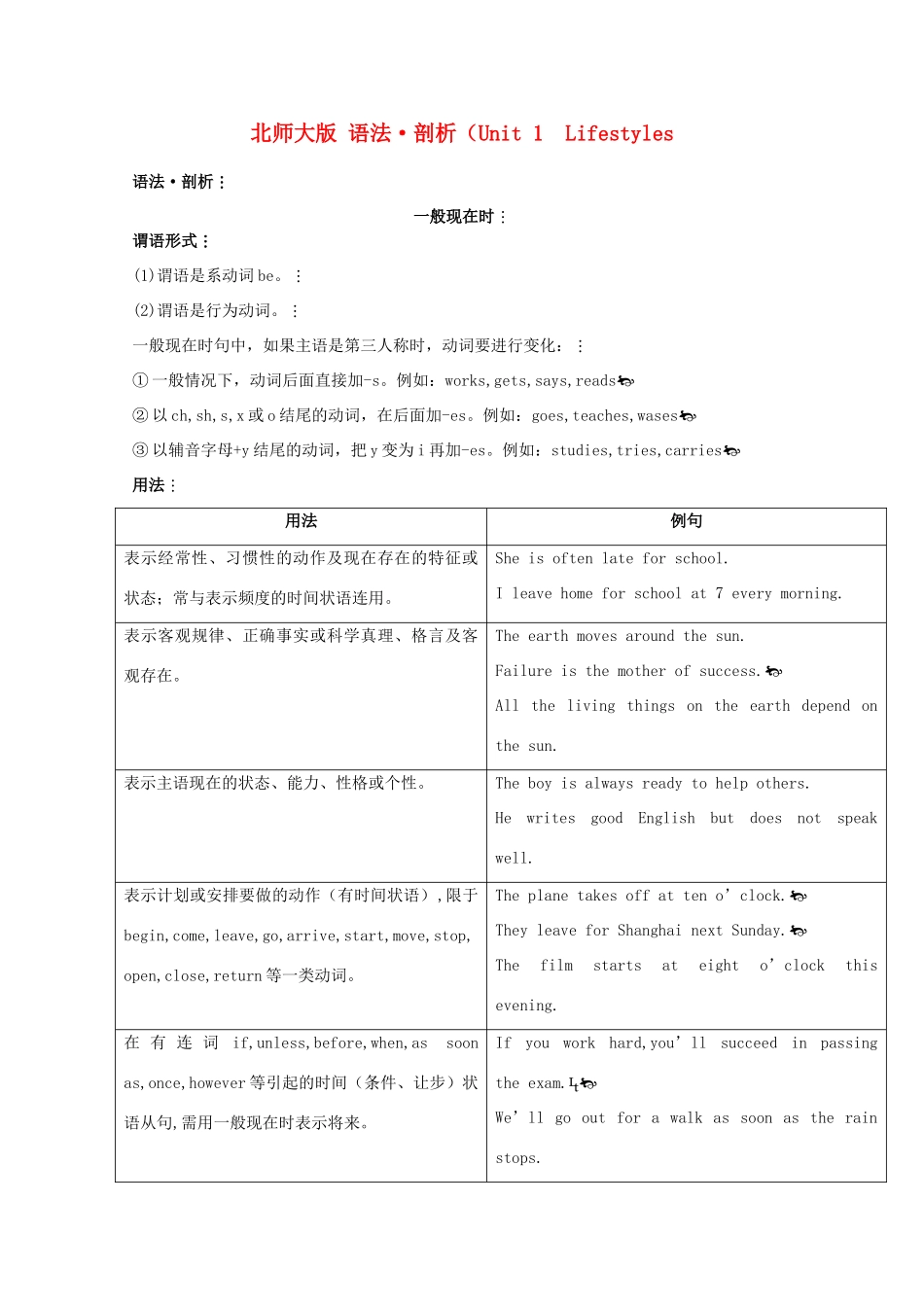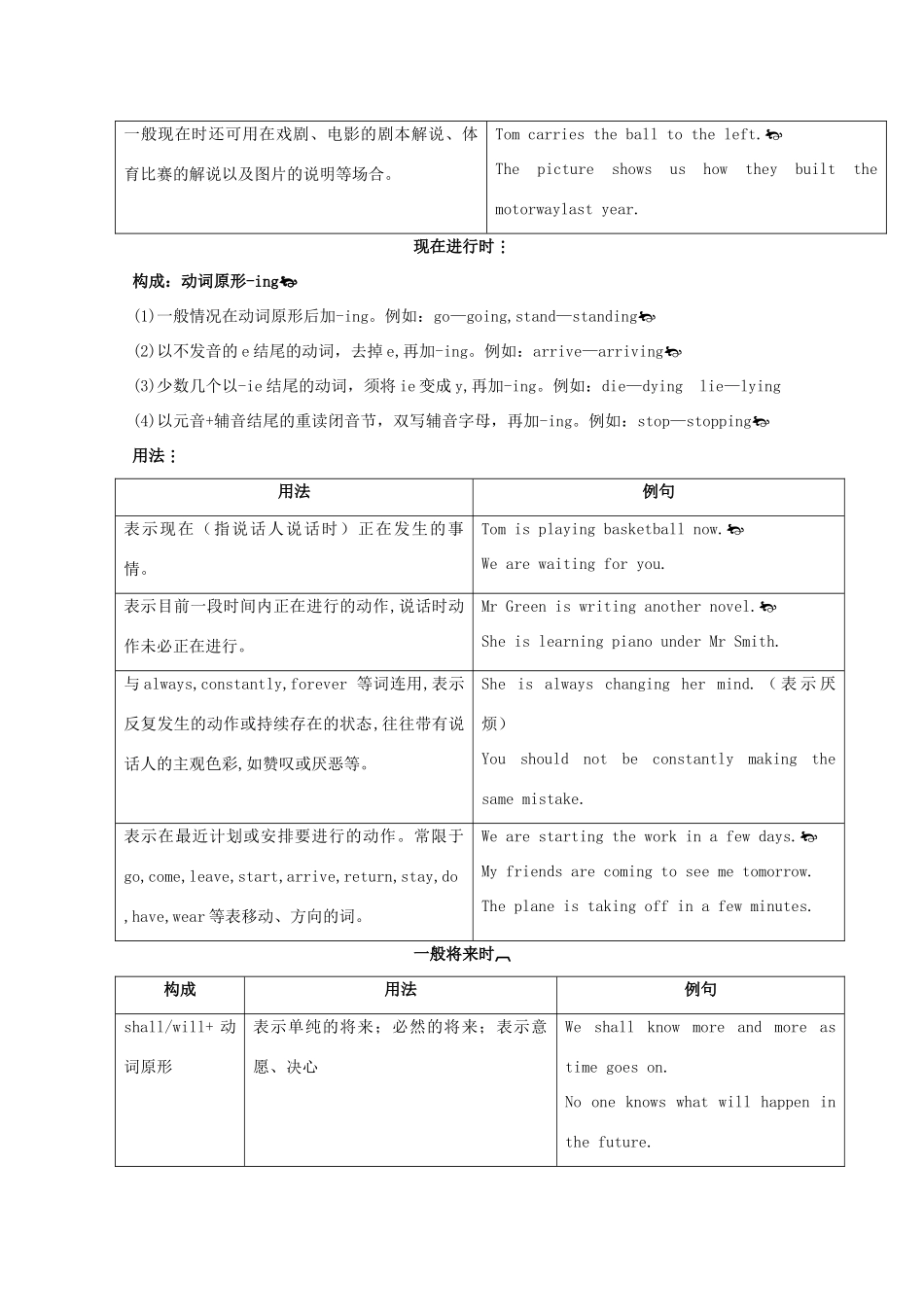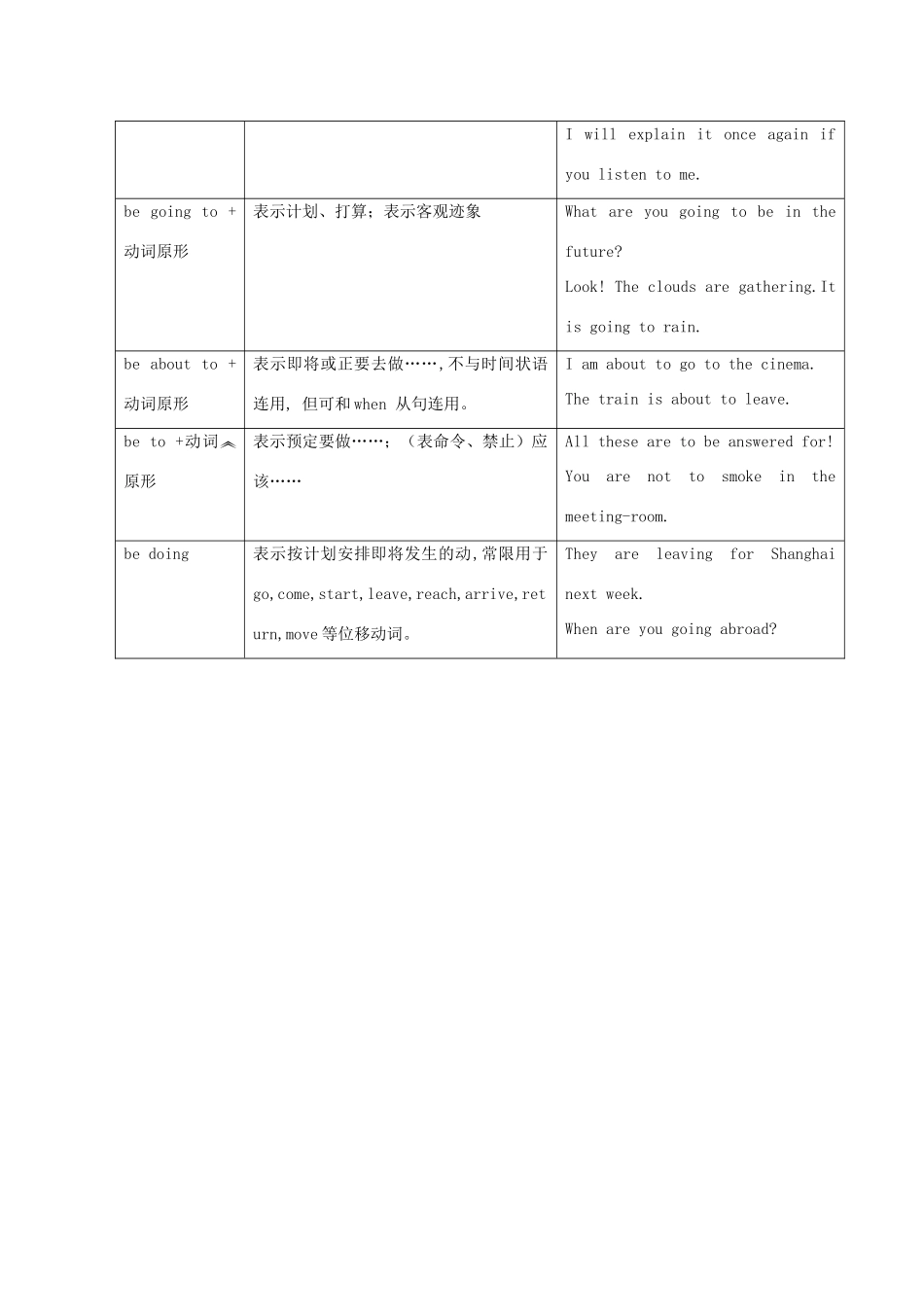北师大版 语法·剖析(Unit 1 Lifestyles语法·剖析一般现在时谓语形式(1)谓语是系动词 be。(2)谓语是行为动词。一般现在时句中,如果主语是第三人称时,动词要进行变化:① 一般情况下,动词后面直接加-s。例如:works,gets,says,reads② 以 ch,sh,s,x 或 o 结尾的动词,在后面加-es。例如:goes,teaches,wases③ 以辅音字母+y 结尾的动词,把 y 变为 i 再加-es。例如:studies,tries,carries用法用法例句表示经常性、习惯性的动作及现在存在的特征或状态;常与表示频度的时间状语连用。She is often late for school. I leave home for school at 7 every morning.表示客观规律、正确事实或科学真理、格言及客观存在。The earth moves around the sun.Failure is the mother of success.All the living things on the earth depend on the sun.表示主语现在的状态、能力、性格或个性。The boy is always ready to help others.He writes good English but does not speak well.表示计划或安排要做的动作(有时间状语),限于begin,come,leave,go,arrive,start,move,stop,open,close,return 等一类动词。The plane takes off at ten o’clock.They leave for Shanghai next Sunday.The film starts at eight o’clock this evening.在 有 连 词if,unless,before,when,as soon as,once,however 等引起的时间(条件、让步)状语从句,需用一般现在时表示将来。If you work hard,you’ll succeed in passing the exam.We’ll go out for a walk as soon as the rain stops.一般现在时还可用在戏剧、电影的剧本解说、体育比赛的解说以及图片的说明等场合。Tom carries the ball to the left.The picture shows us how they built the motorwaylast year.现在进行时构成:动词原形-ing(1)一般情况在动词原形后加-ing。例如:go—going,stand—standing(2)以不发音的 e 结尾的动词,去掉 e,再加-ing。例如:arrive—arriving(3)少数几个以-ie 结尾的动词,须将 ie 变成 y,再加-ing。例如:die—dying lie—lying(4)以元音+辅音结尾的重读闭音节,双写辅音字母,再加-ing。例如:stop—stopping用法用法例句表示现在(指说话人说话时)正在发生的事情。Tom is playi...


